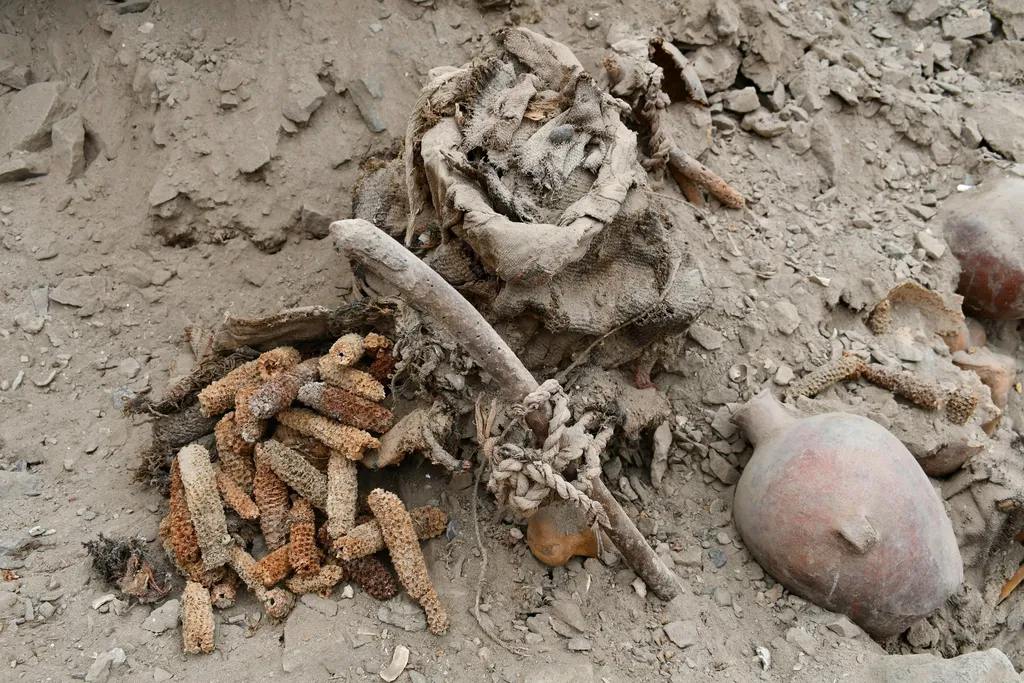Archaeologists in Peru Discover Graves of Men, Women and Children Killed in Battle, Then Buried With Honor
Archaeologists in Peru Discover Graves of Men, Women and Children Killed in Battle, Then Buried With Honor
The 24 members of the mysterious Chuquibamba culture were interred with valuable grave goods
The burials were filled with rich grave goods like pottery and corn cobs.
Institute of Archaeology at the University of Wroclaw
In southern Peru’s Atico River Valley, archaeologists have unearthed a large tomb filled with the battle-scarred skeletons of 24 women, men and children. Interred in various stone enclosures, the two dozen individuals all appear to have died from traumatic injuries sustained during an armed conflict.
Researchers from the Institute of Archaeology at Poland’s University of Wroclaw discovered the burials last fall within the El Curaca archaeological site, near Peru’s Pacific coast. According to a translated statement posted on Facebook, artifacts found in the graves indicate they belonged to the Chuquibamba culture, also known as the Aruni.
The remains were wrapped in textiles and buried alongside corn cobs; pottery fragments; and artifacts made of bone, stone and wood, reports Live Science’s Kristina Killgrove. Because the individuals were interred with such valuable grave goods, the researchers believe they were ritualistically buried as honored, fallen compatriots who were probably killed during a battle that the Chuquibamba won.The Chuquibamba occupied the region between about 1000 and 1450 C.E. Their society “preceded (and later coexisted with)” the more famous Inca Empire, which dominated the Peruvian highlands in the 15th and 16th centuries, notes the Metropolitan Museum of Art. Archaeologists don’t know much about the Chuquibamba, and it was only in recent years that researchers determined that their culture was distinct from the Inca. According to the statement, El Curaca is located north of the Chuquibamba’s center in the Majes River basin.
The researchers created 3D models of the entombed skulls, in addition to conserving and documenting the textiles found at the El Curaca site. The Chuquibamba were skilled weavers, and various examples of their multicolored, intricately patterned textiles survive today, including tunics and a fringed bag made to hold coca leaves, which many South American Indigenous groups chewed as a narcotic. According to Mary Frame’s book Textiles Chuquibamba, many of these fabrics were made of camelid fiber, likely from alpacas. They were “intensely patterned,” with repeating motifs and colors that often overlaid each other.
A joint Polish and Peruvian archaeological expedition surveyed the Atico basin in 2017 and 2019. Per a project summary, the team discovered caves filled with paintings and traces of hunter-gatherer settlements. Ceramics uncovered at El Curaca bore notable similarities to pottery found in Peru’s Tambo and Quilca valleys. As Frame writes, Chuquibamba pottery “is typically dark red with black linear patterns,” and it often features such designs as birds, camelids and eight-pointed stars.
Get the latest stories in your inbox every weekday.


